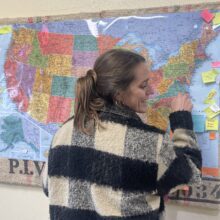|
|
Dana Ayers can look at Jackson County Public Schools (JCPS) through two different lenses.
Her son has attended school in the district for three years, so her first perspective is as a parent. Her second view, which began in 2021, is as superintendent.
Ayers has an education career spanning two decades. She began as a teacher in Lincolnton, where she grew up, and over the years held the positions of assistant principal and principal. In 2018, her family relocated to Jackson County, where she commuted to work as the chief academic officer for Asheville City Schools.
Sooner than Ayers expected, the opportunity came knocking for the position of superintendent in a county she and her family loved. She took the helm of JCPS during the second year of the COVID-19 pandemic.
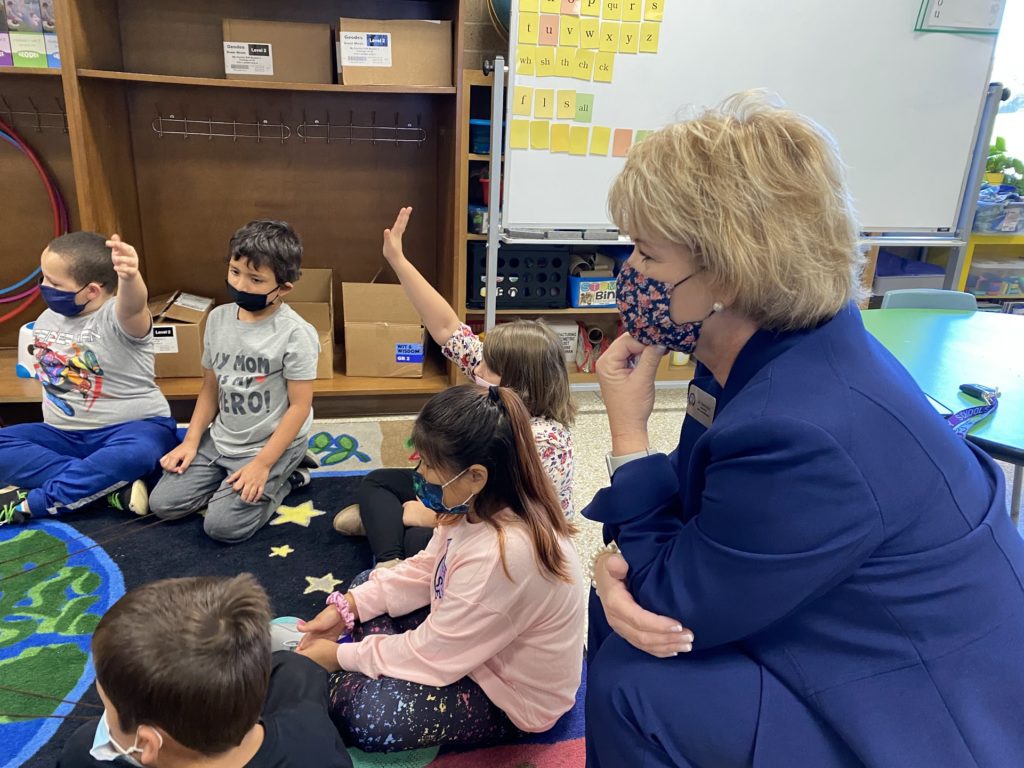
Starting out, her two largest priorities were implementing consistent curriculum for elementary students and expanding the district’s preschool program.
“We needed to figure out a way that we could get fabulous reading curriculum in the hands of our teachers and our students,” Ayers said.
With Elementary and Secondary School Emergency Relief (ESSER) funds from the federal government due to the pandemic, the district purchased the Wit & Wisdom curriculum for five of its schools serving elementary students.
Ayers used this curriculum previously and believes that — when paired with other elements — it can create a more consistent trajectory for students.
Also, on Dec. 7, 2021, it was announced that JCPS received a $236,000 grant from Dogwood Health Trust. With these funds, two new preschool classrooms are scheduled to open in fall 2022.
EducationNC visited Smokey Mountain Elementary School in October 2021 to learn more about the district’s literacy efforts and meet Ayers. She said then that their goal was to serve 36 more early learners by fall 2022 and eventually achieve universal pre-K in Jackson County. She has yet to serve a full year as superintendent, but the district has set in motion plans and programs to help accomplish her goals.
District consistency
There are nine schools in JCPS, including four that serve grades K-8 and one that serves K-6. Those five schools serving elementary school students did not have consistency in the curriculum they utilized. Students entered middle or high school performing on a wide variety of levels.
After Ayers was named superintendent in March 2021, she immediately started working with the chief academic officer to look at the performance grades and reading scores.
“I support autonomy by all means, but the data didn’t reflect that that was effective, it wasn’t giving us the outcomes that we needed,” said Ayers.
It was important to get principal and educator buy-in. So, after discussion with leadership, the district received online access to Wit & Wisdom, and got sample materials into the hands of those who were going to teach it by April 2021. Ayers said she applauds everyone for accepting the challenge of taking on brand new curriculum, in what was already a very difficult year.
Despite delays in the physical curriculum materials arriving to the district, every single K-8 reading teacher was fully trained in the program before school began in fall 2021.
Ayers believes the most important element of Wit & Wisdom’s curriculum is the text complexity.
“I think probably the key to all of this is putting readers, putting novels, in the hands of our students, and not just those old Basal readers from years and years ago … the Wit and Wisdom curriculum heavily integrates all the subjects. So there are a lot of nonfiction books that students will be reading which integrate the sciences, or social studies concepts.”
Superintendent of Jackson County Public Schools Dana Ayers
Along with the Wit & Wisdom curriculum, the district purchased Geodes, a collection of “accessible knowledge building information-rich books for emerging and developing readers” that pairs with Fundations, a systematic phonics and spelling program the district also uses.
The products all work together, according to Ayers, focusing on phonics, reading, text complexity, and writing components — and with this new continuity of curriculum, district-wide collaboration just got smoother for educators.
Wit & Wisdom in class
In a Smokey Mountain Elementary School first grade class, we walked in during an “I notice, I wonder” exercise. Students are paired up, looking at pictures in a book. They point out to each other the things they notice, and are encouraged to think about why they noticed them.
This exercise is supposed to help build perceptiveness and self-questioning. The text is complex — they aren’t necessarily able to read it by themselves. After the exercise, the teacher reads the text aloud.
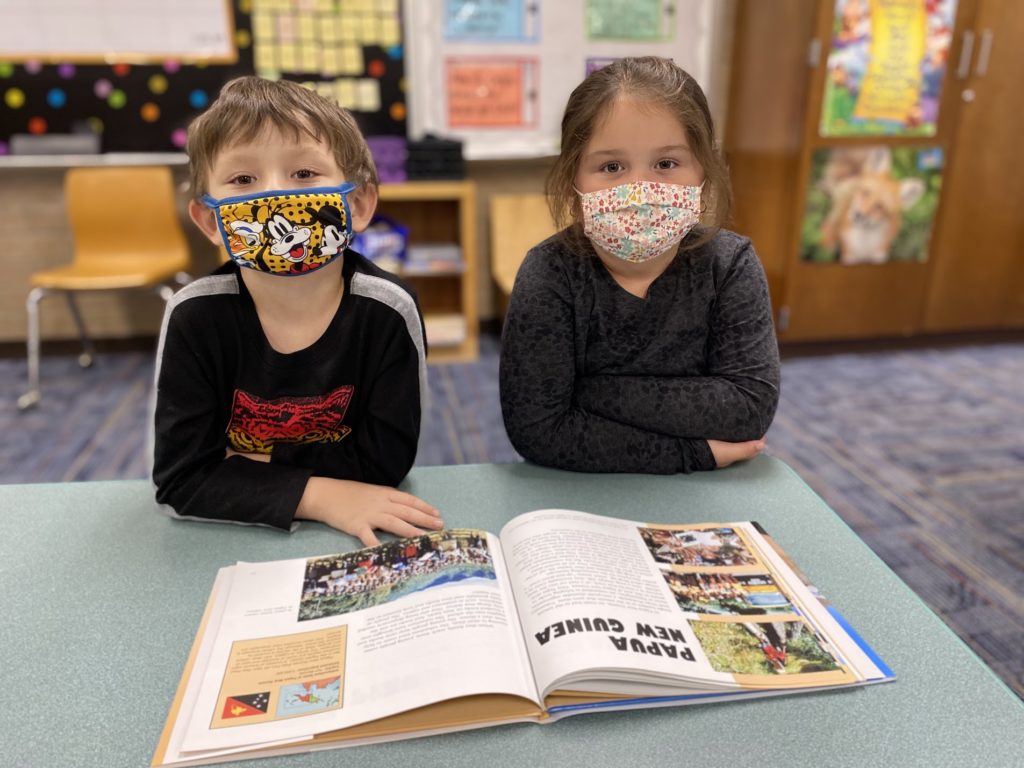
Christie Rogers, the teacher, has been at Smokey Mountain Elementary School since 2015. She said she likes the new curriculum’s connection between standards and subjects. She doesn’t have to scrounge for materials or hope the books she needs are available in the library.
In a second grade classroom, students are reading aloud in unison from the book “How Do You Know It’s Fall?” After reading a few sentences, the students stop and the teachers ask questions for context. These questions are tied back to a larger theme the class is exploring: seasons and incorporating change.
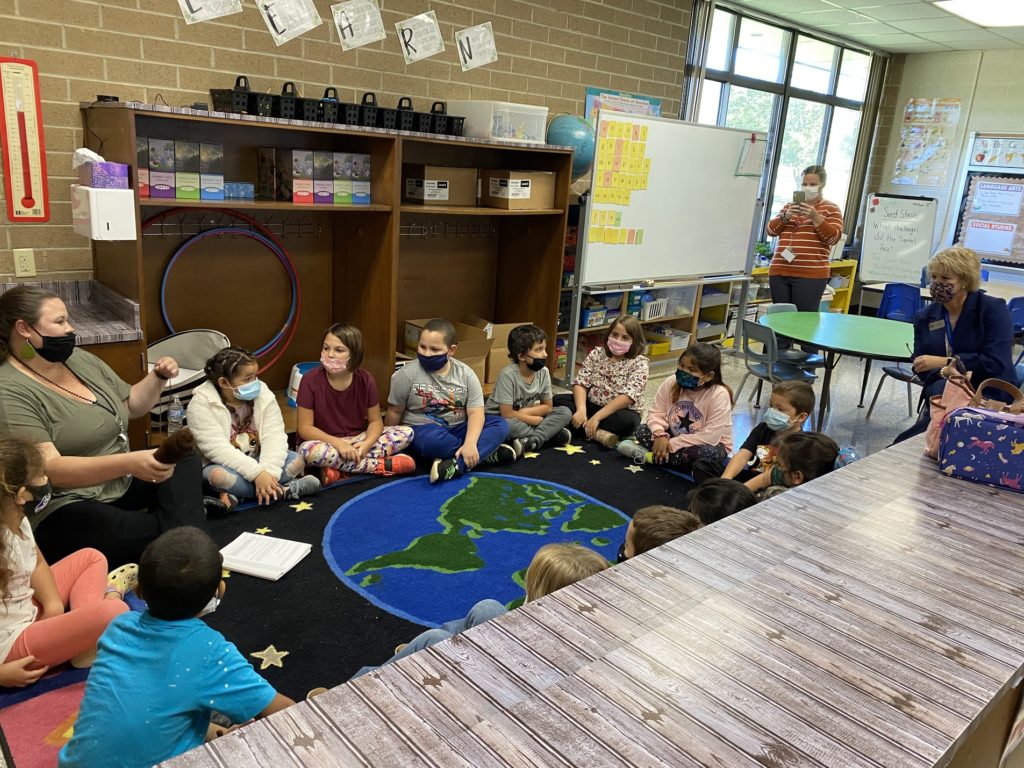
After reading the book, the class gathers together in a corner, sitting in a circle for a Socratic seminar. This practice is guided by a teacher, but is intended to promote student-led discussion about the text. Each student gets the opportunity to say something they have observed changing during fall.
In the last class we visited, third graders were individually working on creative writing. Prompts on the board suggested they write about what it would be like if they switched positions with their parents for a day. The other asked that they write a story using the words dinosaur, egg, water, turkey, and Batman.
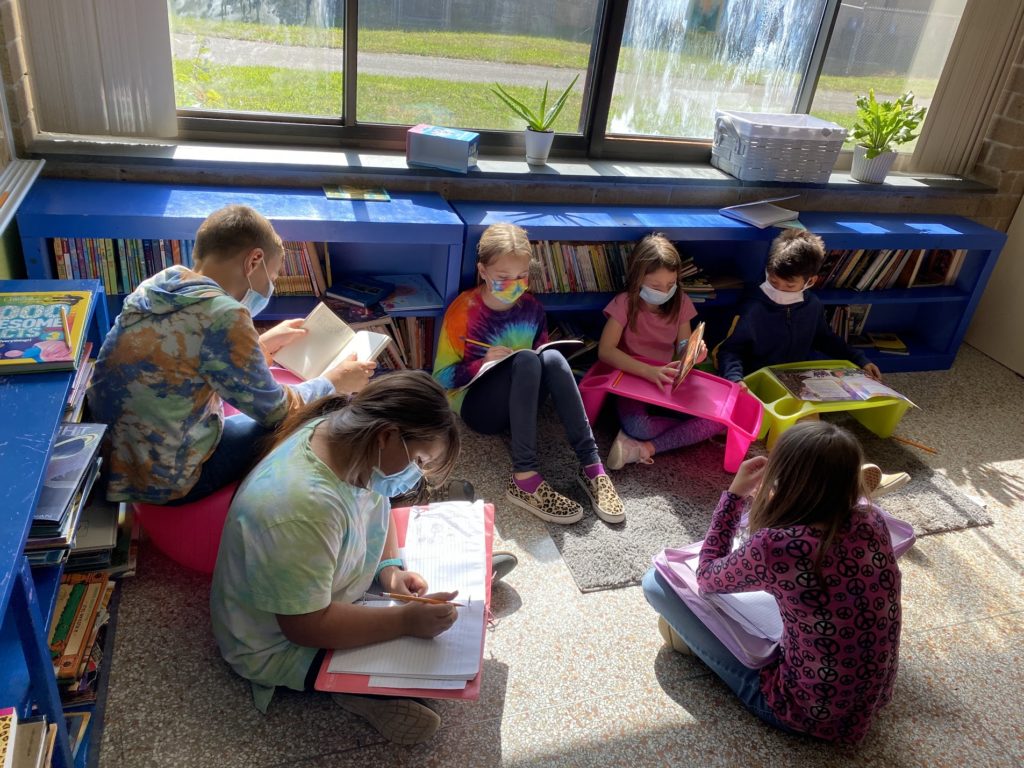
Outside this classroom, there is a gallery of these students’ artwork. The theme in class was “Everyday life and the natural world.” The students had to make a collage. With this project — a collaboration with the art teacher — students had to learn the new vocabulary words “foreground” and “background.”
Ayers is excited about the future of JCPS. The community is behind the school system, she said, from county commissioners to local businesses, to the families whose children are enrolled. And, she added, what better place to be than in a place with “people who want to do right by kids?”

